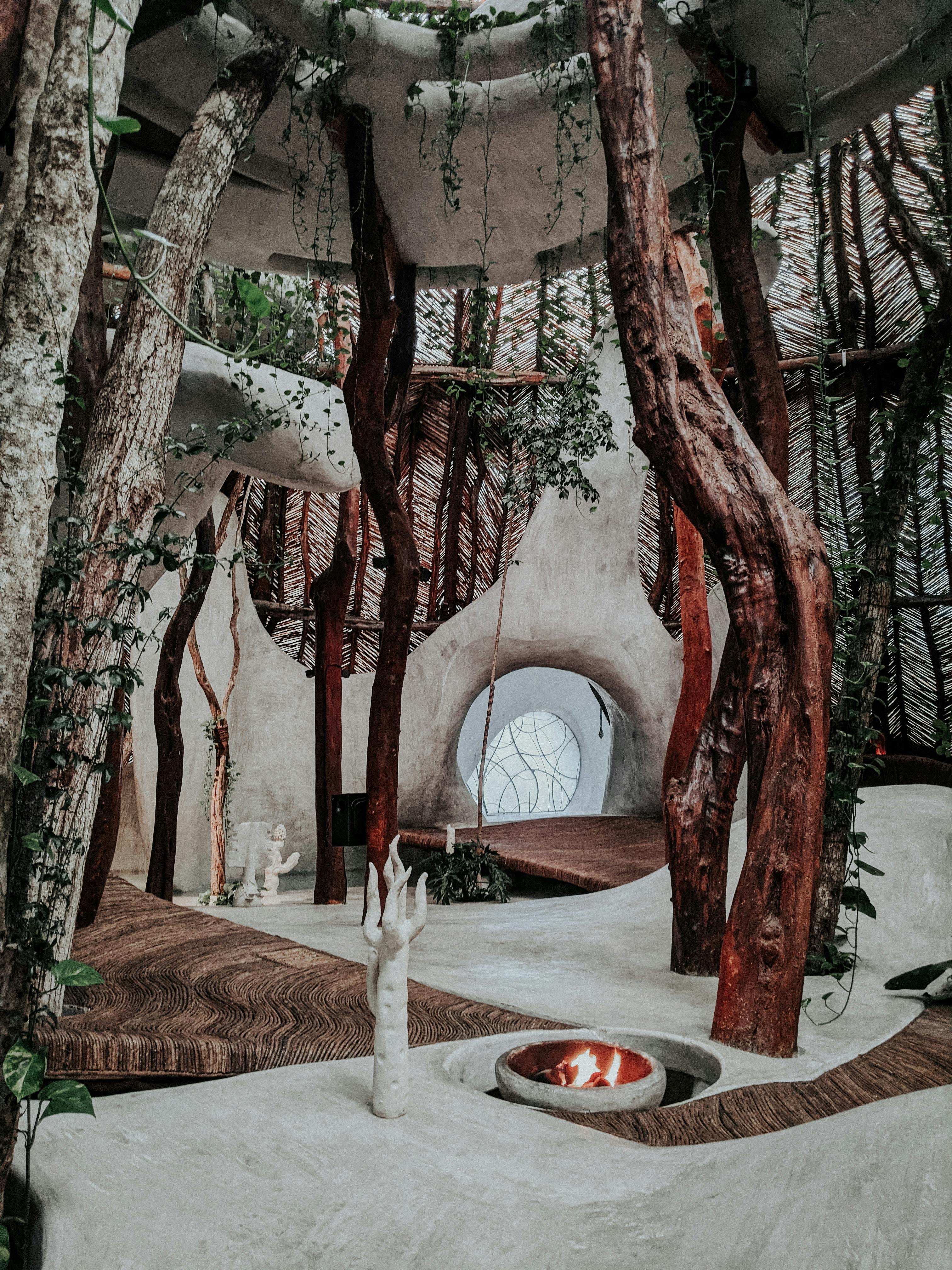Biophilic Design: Revitalizing Health Through Nature-Inspired Spaces
Can our surroundings truly impact our well-being? Imagine walking into a room filled with natural light, lush greenery, and organic textures. Your stress levels drop, your mood lifts, and you feel an inexplicable connection to the world around you. This is the power of biophilic design – a revolutionary approach to creating spaces that nurture our innate bond with nature and boost our overall health.

The Origins of Biophilic Design
The term biophilia, meaning love of life or living systems, was first coined by psychoanalyst Erich Fromm in 1973. However, it was biologist Edward O. Wilson who popularized the concept in his 1984 book Biophilia, proposing that humans have an innate tendency to seek connections with nature and other forms of life.
Biophilic design emerged as a practical application of this theory, aiming to satisfy our biological need for nature in the built environment. It draws on research showing that exposure to natural elements can reduce stress, improve cognitive function, and enhance overall well-being.
The Science Behind Nature’s Healing Power
Numerous studies have demonstrated the profound impact of nature on human health. Research has shown that exposure to natural environments can lower blood pressure, reduce cortisol levels, and improve immune function. A landmark study published in the journal Science found that patients recovering from surgery in rooms with views of nature had shorter hospital stays and required less pain medication than those in rooms without such views.
Moreover, biophilic design elements have been linked to improved cognitive performance, increased creativity, and enhanced productivity. A study by the University of Oregon found that employees with views of nature from their workstations reported 23% fewer sick days compared to those without such views.
Key Principles of Biophilic Design
Biophilic design incorporates nature into our built environments through various strategies:
-
Direct nature experiences: This includes incorporating plants, water features, and natural light into indoor spaces.
-
Indirect nature experiences: Using natural materials, colors, and patterns that mimic nature.
-
Space and place conditions: Creating environments that reflect natural settings, such as changes in light throughout the day or spaces that offer prospect and refuge.
Implementing Biophilic Design for Better Health
Integrating biophilic design into our daily lives doesn’t necessarily require a complete overhaul of our spaces. Simple changes can have significant impacts:
-
Maximize natural light: Position workspaces near windows and use light-filtering curtains instead of heavy drapes.
-
Incorporate plants: Indoor plants not only purify air but also reduce stress and boost mood.
-
Use natural materials: Opt for wood, stone, and other natural materials in furniture and decor.
-
Create visual connections to nature: If direct views of nature aren’t possible, use nature-inspired art or digital nature scenes.
-
Simulate natural environments: Use dynamic lighting systems that mimic natural light patterns throughout the day.
Biophilic Design in Healthcare Settings
The healthcare sector has been quick to recognize the potential of biophilic design in promoting healing and well-being. Hospitals and clinics are increasingly incorporating healing gardens, green walls, and nature-inspired artwork to create more restorative environments for patients and staff alike.
A study published in the Health Environments Research & Design Journal found that patients in rooms with plants and flowers had lower blood pressure, experienced less pain, anxiety, and fatigue, and had more positive feelings compared to patients in rooms without plants.
The Future of Biophilic Design
As urbanization continues to accelerate, the importance of biophilic design in maintaining our connection to nature becomes increasingly crucial. Emerging technologies are opening up new possibilities for integrating nature into our built environments:
-
Living walls and roofs: Advanced hydroponic systems are making it easier to incorporate large-scale plantings into buildings.
-
Biomimicry: Designers are drawing inspiration from nature’s forms and processes to create more sustainable and health-promoting structures.
-
Virtual reality: For spaces where real nature isn’t feasible, VR technology can provide immersive nature experiences.
-
Smart building systems: AI-powered systems can optimize natural light, air quality, and other biophilic elements for maximum health benefits.
Biophilic Wellness Tips
• Spend at least 20 minutes in nature daily for improved mood and reduced stress
• Create a mini indoor garden with air-purifying plants like snake plants or peace lilies
• Use nature sounds like rainfall or birdsong for better sleep and relaxation
• Incorporate fractal patterns found in nature into your home decor for reduced stress
• Choose wooden furniture over synthetic materials for a more calming environment
• Use essential oils derived from plants to improve air quality and promote relaxation
In conclusion, biophilic design represents a powerful tool in our quest for better health and well-being. By reconnecting us with nature in our built environments, it offers a holistic approach to improving physical and mental health. As we continue to face the challenges of modern urban living, embracing biophilic design principles may be key to creating healthier, more resilient communities. The future of health-promoting spaces lies in harmonizing our innate connection to nature with the demands of contemporary life.





